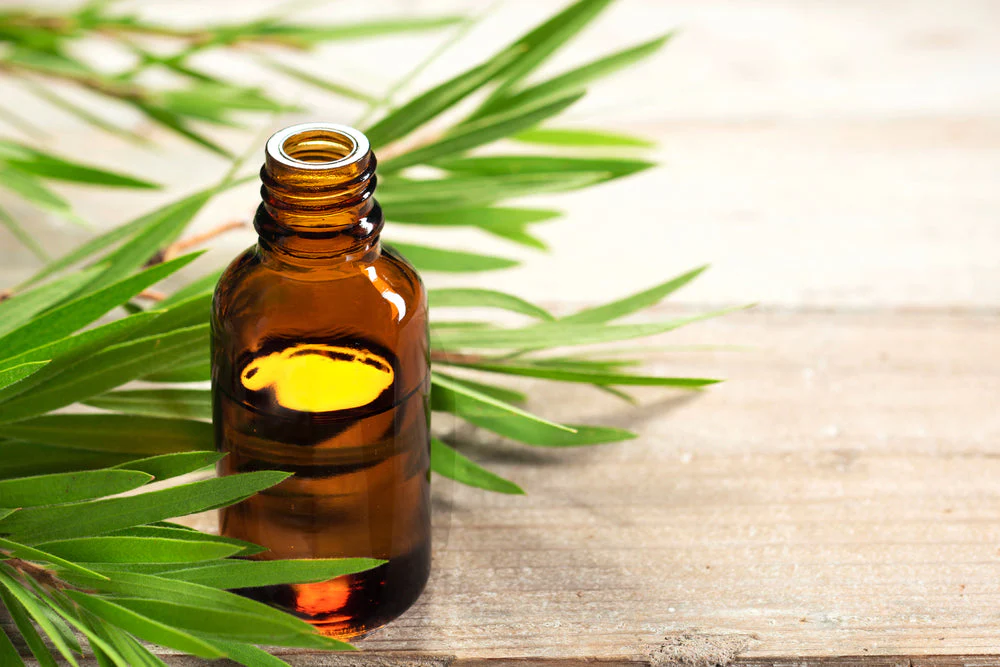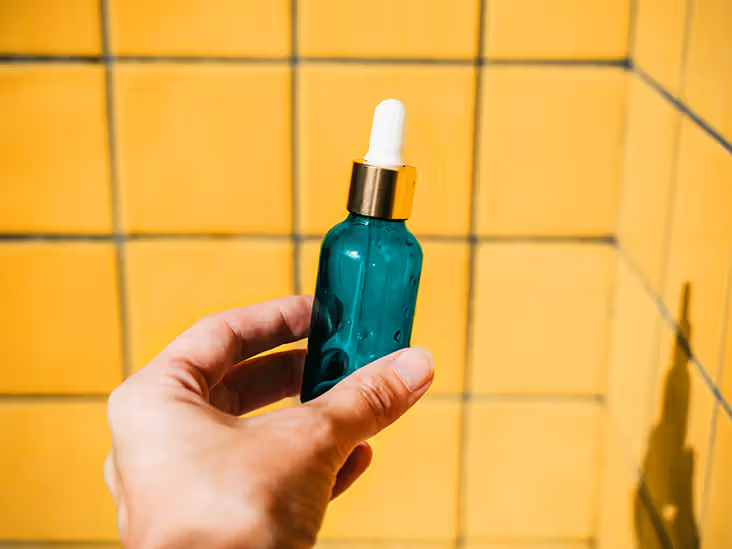Tea tree oil, an ancient remedy derived from the leaves of the Melaleuca alternifolia tree native to Australia, has quietly made its way into modern skincare—and for good reason. Revered for its antibacterial, antifungal, and anti-inflammatory properties, it’s now a go-to natural solution for acne, blemishes, oily skin, and even fungal infections.
But is it really a skincare miracle in a bottle? And how can you use it safely without irritating your skin?
Let’s dive deep into the many uses of tea tree oil for skin, including how it works, who it’s best for, and a few simple DIYs you can try at home.

Is Tea Tree Oil Good for Skin?
Yes—when used correctly, tea tree oil can work wonders for your skin.
It’s rich in over 100 active compounds, including terpinen-4-ol, a powerful antimicrobial agent that helps:
- Fight acne-causing bacteria
- Soothe inflammation and redness
- Speed up wound healing
- Combat fungal infections
It’s especially useful for skin conditions like acne, eczema, psoriasis, and minor skin irritations or cuts.
Tea Tree Oil Benefits for Skin
From tackling dark spots to calming itchy skin, here’s why you might want to add this oil to your skincare arsenal:
Fades Dark Spots & Hyperpigmentation
Tea tree oil can help reduce post-acne dark spots and discoloration by controlling inflammation and bacterial build-up that worsen pigmentation.
Helps with Skin Tags
Its antiseptic properties may dry out small skin tags over time. However, consult a dermatologist if you notice changes in size or color.
Eases Dry Skin & Eczema
When diluted, tea tree oil soothes itchiness and irritation, making it a gentle option for dry skin and eczema flare-ups.
Fights Fungal Infections
Thanks to its antifungal effects, tea tree oil works against athlete’s foot, nail fungus, and ringworm.
Accelerates Wound Healing
Its antimicrobial and anti-inflammatory qualities help prevent infections and promote healing for minor cuts and abrasions.
Tea Tree Oil for Oily Skin & Acne‑Prone Skin
If you have oily or acne-prone skin, tea tree oil might just be the natural remedy you’ve been waiting for.
- It unclogs pores without stripping your skin’s natural barrier
- Reduces acne-causing bacteria and inflammation
- Balances excess oil production
Clinical Proof:
A study published on PubMed found that a 5% tea tree oil gel significantly reduced both inflamed and non-inflamed acne lesions. It showed comparable results to benzoyl peroxide but with fewer side effects.
Plus, it’s gentle, budget-friendly, and free from the harsh chemicals found in many conventional acne treatments.
Beyond Acne: More Ways Tea Tree Oil Helps Your Skin
Tea tree oil isn’t just about pimples—it offers a range of holistic skincare benefits:
- Scalp Care: Helps relieve dandruff and soothe itchy scalp
- Oral Health: When used as a mouth rinse (don’t swallow), it can fight bad breath and gum inflammation
- Bug Bite Relief: Calms stings and reduces swelling
- Natural Deodorant: Its antibacterial nature helps combat body odor
- Nail Health: Keeps nails fungus-free and strong
How to Use Tea Tree Oil Safely
Despite its benefits, tea tree oil must be used with caution to avoid irritation or allergic reactions.
Always Dilute
Mix 1–2 drops of tea tree oil with 1 teaspoon of a carrier oil like jojoba, coconut, or almond oil.
Do a Patch Test
Apply to a small area (like your wrist) and wait 24 hours to check for any sensitivity.
Use Sparingly
Apply only to affected areas, once or twice a day after cleansing.
Avoid Eye and Lip Areas
Tea tree oil can be too harsh for sensitive zones.
Stop If You Notice Irritation
Redness, itching, or burning? Discontinue immediately and consult a dermatologist.
Read More: Tea Tree Oil for Hair: Small Drops, Big Magic
DIY Tea Tree Oil Skincare Recipes
Tea tree oil is surprisingly versatile. Try these easy at-home skincare recipes for clear, calm, and glowing skin:
Tea Tree Oil Face Wash (for dry to normal skin)
- 2 tablespoons aloe vera gel
- 1 tablespoon honey
- 1 tablespoon liquid castile soap
- 3–4 drops tea tree oil
- 1 teaspoon jojoba oil
Mix, pour into a pump bottle, and shake before use.
Tea Tree Oil Spot Treatment
- 1 drop tea tree oil
- Mix with aloe vera gel or carrier oil
- Dab directly onto blemishes
DIY Tea Tree Facial Toner
- A few drops of tea tree oil
- Mix with rose water or witch hazel
- Store in a spray bottle and use daily after cleansing
Conclusion
Tea tree oil is no miracle cure—but it’s certainly a powerful, science-backed ally in skincare. Whether you’re battling breakouts, calming irritated skin, or just looking for a natural boost to your routine, it’s worth exploring—if used wisely.
- Always dilute
- Do a patch test
- Use it consistently—but gently
And as always, consult with a dermatologist before making it a long-term staple in your routine.
Also Read : Skincare Routine for Hijab Wearers: Breathe & Nourish Skin


